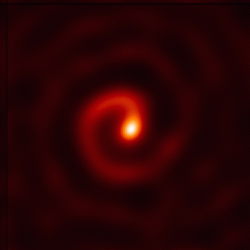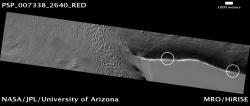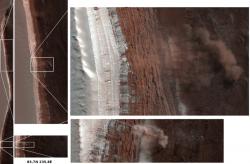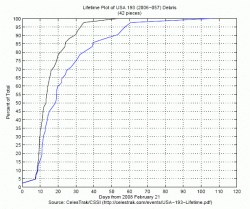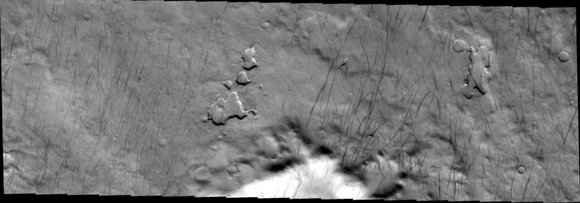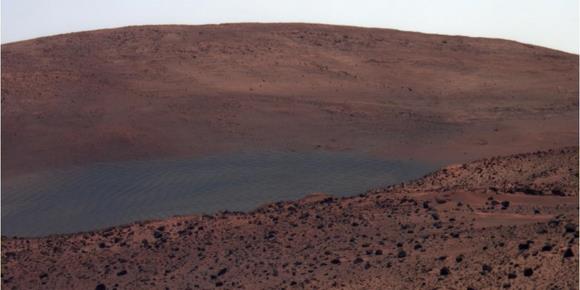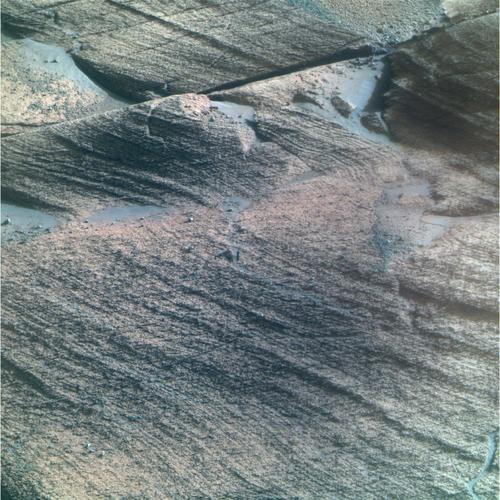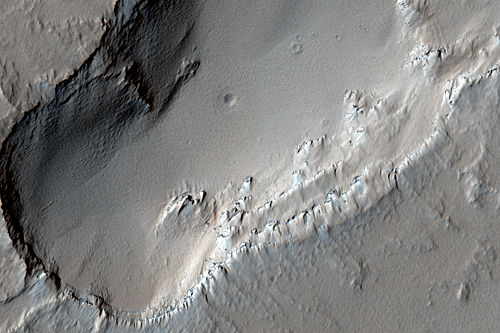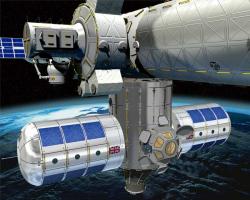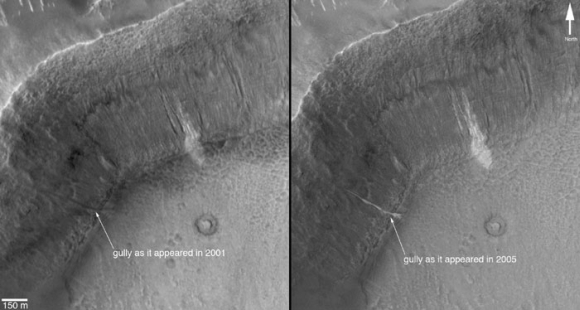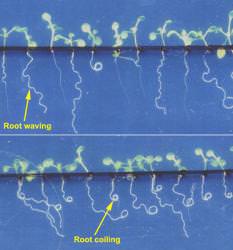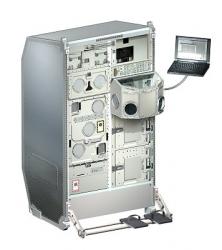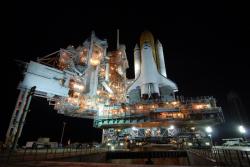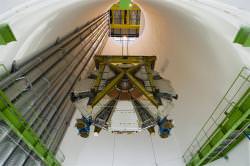A team of astronomers from the University of Sydney in Australia have been keeping an eye on a binary star system called Wolf-Rayet 104, located in the constellation Sagittarius. Wolf-Rayet stars are hot, gargantuan, older stars that are losing their masses, and astronomers consider these stars as ticking bombs: they could go supernova at any time within the next few hundred thousand years. That’s a relatively short fuse for astronomers. Images of this system from the Keck Telescope show an almost perfect spiral nebula formed by the two stars orbiting each other as they each blow off streams of gas. The way this system is spinning caught the eyes of these astronomers, who say Earth could be in the line of fire when the system blows.
Usually, a supernova explosion would be harmless at interstellar distances like the 8000 lightyears that this system lays from Earth, and it would just provide an impressive show for stargazers. But astronomers say the only way WR 104 could appear as an almost perfect spiral is if those of us on Earth were looking down the spin-axis of the system. Astronomer Peter Tuthill says that sometimes, supernovae focus their energy into a narrow beam of very destructive gamma-ray radiation along the axis of the system. A gamma-ray burst is a super-duper supernova that sometimes happens to massive stars, like the ones in WR 104.
As of now, no one can say for sure when the system will go supernova, or how massive and powerful the explosion might be. But the way these two stars are spinning about each other has astronomers thinking this system won’t provide just a run-of-the-mill explosion.
And an intensive gamma-ray burst at that distance could possibly be harmful to life on Earth.
But right now, this is all speculation, and more study on this system is needed before anyone needs to get worried. And this is all definitely very fascinating.
“I used to appreciate this spiral just for its beautiful form, but now I can’t help a twinge of feeling that it is uncannily like looking down a rifle barrel,” says Dr. Peter Tuthill.
With a sequence of 11 different images, the astronomers were able to portray how the spiral nebula of this system is rotating in a circle every 8 months.
Original News Source: University of Sydney Press Release

